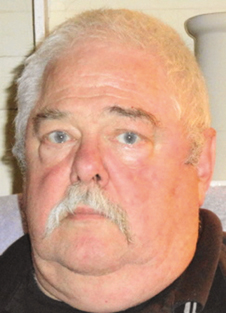A recently televised program talking about New York’s “hidden” history put me in a mood. Noticeable in the program was the presence of re-enactors – folks who dress in period clothing and who can talk about their particular interest. More than merely a hobby, re-enacting is also a unique means of teaching history, a topic that’s all too often given short shrift in schools around the state and the nation. We have college-educated adults who have barely a clue regarding the topic, and public education is largely to blame. Young folks often ask why they should care about “a bunch of old dead men.” This has, as most of us realize, been the case for decades. Rare is the kid who takes a serious look at the topic.
For most of my school days, history was presented as “Here’s your history book, go read it.” Often as not, my teachers were not in the least interested in the topic. Even as early as the 1960s, the emphasis had shifted hard towards math, science and technology. It’s only gotten worse – though those topics certainly are not “worse’ in the practical sense. I started in college in engineering, and in fact the entire four years curriculum didn’t include any credits in history. I thought that was perfectly acceptable – engineering is a demanding course of study, and few of us wanted to “waste” precious time on seemingly irrelevant topics.
I switched majors a year and a half later, and had begun to realize that maybe, in certain areas of study, history might actually matter. Going to a Bible college in Eugene, Oregon, made it mandatory. We were to become pastors in our particular denomination, and we needed to understand how to “present the message”, and that meant learning what got folks’ attention and what had not worked in the past. I determined that the ministry was not to become my life’s goal, left Northwest Christian College and enlisted in the Army.And here, again, was history. We learned very quickly that failing to understand the history of
And here, again, was history. We learned very quickly that failing to understand the history of battle, especially what didn’t work, could get you killed! We found out why battlefield tactics had to “keep up” with advances in weaponry. In particular, we learned that all too often, the “brass” tended to fight today’s wars with yesterday’s weapons and tactics. And that, all too often, the soldier had to make big changes in the midst of a firefight – adapt NOW, or die NOW! Not a few of the highest medals were earned by soldiers who did just that, saving not just themselves, but their comrades as well.
So where in all this does re-enacting come in? Well, we’re teachers. We attempt to present the way it was in order to encourage further study by our fellow citizens. We want folks to recognize the endeavors of those who’ve gone before, especially to encourage folks to go beyond the usual, and to honor those who preceded us. We will often adopt a particular persona – that of, say, an engineer, a cavalryman, a sergeant or a general, a quartermaster, or as in my case, a surgeon. I often wished, as a much younger person, that our lessons in history had included going to watch a re-enactment. One can read about a cannon being fired, but reading about it simply cannot measure up to the mental and emotional impact of actually witnessing the firing of a REAL cannon! And then hearing about what that cannonball, shell, or load of grape or canister actually did to living flesh and blood – it makes an impression no book learnin’ can impart!
We can be a bit overbearing on “fresh fish”, those who are new to re-enacting. In my bunch of Civil War re-enactors, we insist on being as “period” as possible – accurate dress, accurate accoutrements, real weapons – yeah, you can buy an exact, shoot-able reproduction of a Civil War rifle, cannon, handgun – AND the proper (and safe) firing of same.
It can be a bit expensive. Those reproduction rifles can cost over a thousand bucks, for instance. And it can be somewhat controversial…we have people in our midst who portray Confederate soldiers, and we not only allow, we encourage the display of the Confederate battle flag. Look, it was real. The “rebs” valued that banner as intensely as today’s citizens value Old Glory. Yes, theirs was a cause that should not have been – but it was, and to try to do what we do without appropriate gear, including their flags, seriously impedes the impact of our endeavors.
There were no Civil War battles in New York state, but there were battles during other conflicts, including the French and Indian War, the Revolutionary War, the War of 1812…and those who choose to re-enact those would love to have a few more “fresh fish” a.k.a. recruits! These conflicts had intense impact on who we are today, and how we act, and how we think of other people. Re-enacting needs new recruits. We hope some of those who read these words will seriously consider joining us. ALL FOR THE UNION, HURRAH!
William D. “Bill” Mayers RT, RN, of Sullivan is a retired senior U.S. Army Corpsman. A certified healthcare professional since 1964, he holds two professional licenses, including that of Registered Professional Nurse licensed in New York, Alaska, Virginia and Louisiana. He has four children, two stepchildren, three grandchildren, a new great-grandchild and is an avid analyst of current events.


